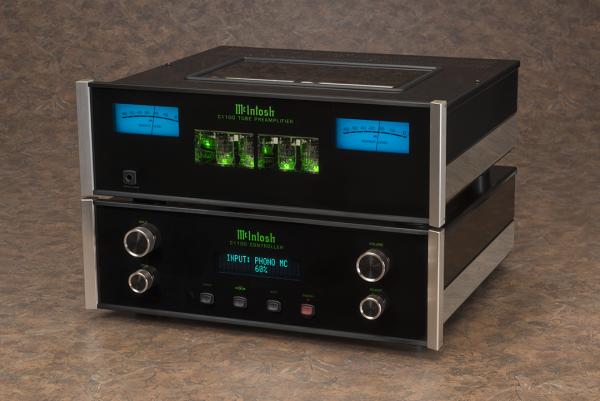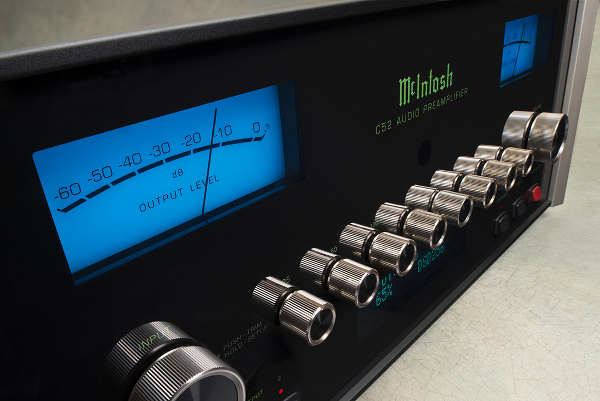McIntosh Intros Reference Grade Stereo Preamps

The dual-chassis C1100 stereo tube preamp achieves ultra low noise performance by isolating the audio section from the control and power sections and further electrically and mechanically isolating the left and right channels within each chassis for “true dual mono operation.” Made of polished stainless steel and brushed black Titanium stainless steel, the two units connect via a pair of umbilical cables, which are shielded to prevent outside noise from polluting the audio signal.
Power control, data ports, and external control connections are located in the controller, while the preamplifier chassis houses the audio circuitry and connections, including 12 analog inputs: 6 balanced, 4 unbalanced, and adjustable load moving magnet and moving coil phono inputs. For outputs, there are two sets of balanced and two sets of unbalanced connections.
The C1100 uses 12 vacuum tubes—four more than its predecessor, the C1000—which is said to lower its dependency on solid-state support. Price is $6,500 per chassis.

McIntosh is hailing the C52 as its most advanced, single chassis solid-state preamplifier ever. The stereo preamp has and eight-band analog equalizer and 16 inputs, including three balanced and four unbalanced assignable inputs plus three optical and two coaxial connections, and a USB port. For outputs, it has three pairs of balanced and unbalanced connections. Price is $7,000.
The C47 has 12 inputs, including two balanced and three unbalanced assignable inputs plus 1 coaxial and two optical connections, and a USB port. For outputs, it has 2 pairs of balanced and unbalanced connections. Price is $4,000 with availability set for October.

Common features of C52 and C47 include optical and coax inputs that support high-resolution audio up to 24-bit/192kHz, compatibility with many high-resolution file formats, including DSD, and two (moving coil and moving magnet) phono inputs. All inputs are available all of the time for configuration flexibility and the outputs have been updated for accommodate bi-amping and tri-amping.
Features common to all three models include a headphone jack that taps into McIntosh’s Headphone Crossfeed Director (HXD) circuitry, said to add spatiality to music, a home theater pass-through mode for seamless integration with existing multichannel gear, and classic McIntosh styling with black glass front panels, VU meters, and custom machined aluminum end caps.
- Log in or register to post comments





























































